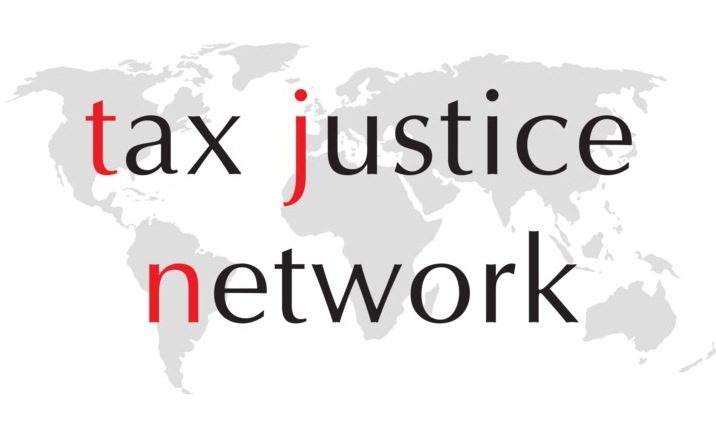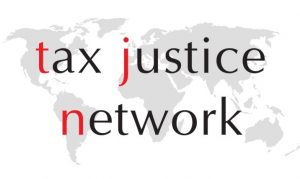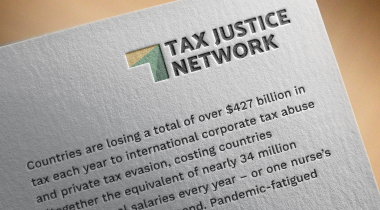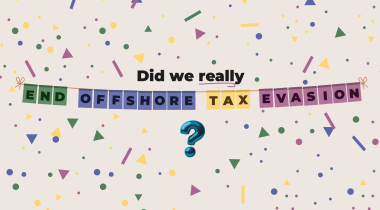
Andres Knobel ■ Automatic Information Exchange: a trove of useful new data. Here’s a template for using it

 Automatic Exchange of Information (AEOI) at a global level is supposed to become effective in 2017, when many jurisdictions[1] start to exchange financial account information (e.g. bank account information) with each other, under the OECD’s Common Reporting Standard (CRS). The idea is to crack down on tax cheats and others by sharing relevant information across borders, subject to appropriate confidentiality safeguards. For all the CRS’ shortcomings, this is a huge and welcome step forwards for transparency.
Automatic Exchange of Information (AEOI) at a global level is supposed to become effective in 2017, when many jurisdictions[1] start to exchange financial account information (e.g. bank account information) with each other, under the OECD’s Common Reporting Standard (CRS). The idea is to crack down on tax cheats and others by sharing relevant information across borders, subject to appropriate confidentiality safeguards. For all the CRS’ shortcomings, this is a huge and welcome step forwards for transparency.
The CRS will require financial institutions – depositary institutions, custodial institutions, investment entities and some insurance companies – to determine the residence of their account holders, so that their financial account information can be sent, via local authorities, to the authorities where each account holder is resident. Information to be collected and reported about each account holder includes
- identity information (name, residence, tax identification number and date of birth,) and
- Financial information (account balance and all the income from dividends, interests or from holding, selling or redeeming financial assets).
Naturally, accounts may be held by individuals or by entities (trusts and similar arrangements are considered entities under the CRS). In the case of entities which are classified as “Passive NFEs” (because they are non-financial institutions whose income or assets are mainly “passive”, such as from dividends, interests, rent, etc.), financial institutions will also need to identify the “beneficial owners” of those entities (called “controlling persons” in the CRS), meaning any natural person owning or controlling the entity, for example anyone who owns more than 25% of the capital of an entity. Interestingly, in the case of a trust that is considered a passive NFE, the “controlling persons” will include all the related parties of the trust (settlors, protectors, trustees, beneficiaries, or anyone with control over the trust). In other words, a lot of financial and identity information will be collected and reported pursuant to the CRS.
The Tax Justice Network, with the support of experts and other organisations within the Financial Transparency Coalition (FTC), has developed a Template for AEoI Statistics so that an aggregate (by country of residence) of all the information to be collected and exchanged via the CRS, is also published.
This would give academics, NGOs, journalists, investors and the public at large access to this treasure trove of new information on the total value of assets and income held abroad by residents of each jurisdiction – for developing countries as well as rich ones.
It seems like a free lunch for all, at the expense of the world’s crooks. No account holders will be publicly identified, so nobody’s confidentiality will be compromised.
The Template suggests that specific information should be published on the aggregate and median value held and income earned by all individuals and entities in each jurisdiction, and also the total number of accounts and account holders, sorted by type of financial institution where the money is held (depositary, custodial, investment entity, insurance company, etc.).
The template suggests other crucial data sets that could and should easily be extracted, such as data revealing information about the locations of members of what we have called the “enabling infrastructure” of offshore.
This way, the public will be able to know not only how much money (and income) is held/obtained abroad, but also if it is held as deposits, or insurance contracts or in mutual funds, and whether it is held directly by individuals or via entities, and how many of them have assets abroad (to know whether one person has all the money in many accounts, or many people have roughly the same amount of money in many accounts, etc.).
The likelihood that this template is adopted will depend on political willingness, but not on cost. Financial institutions already have to collect information on their account holders and send it to their local authority. The latter will have to compile all the received data and sort it by jurisdiction of residence (to eventually exchange it with the corresponding foreign authority). The template only requires that authorities, after compiling and sorting the data, also calculate the “totals” for each jurisdiction and to publish it. Nothing else.
However, to be truly useful, authorities should require financial institutions to collect and report information about all of their account holders, instead of only about those who are resident in a jurisdiction which engages in AEoI with their local jurisdiction. That’s really not a lot to ask.
What is more, authorities that receive information via the CRS should match the received data with their local tax returns, to identify cases of undeclared assets and income. If these authorities publish the percentage of undeclared assets, it will be possible to have a very good picture of how much money is held abroad by residents of each jurisdiction, and how much of that money has not been declared. This is a direct way of obtaining information on illicit financial flows.
[1] As of October 30, 2015, more than 90 jurisdictions have committed to implement the CRS in either 2017 or 2018. Out of these, 75 jurisdictions (as of December 3, 2015) have already signed the Multilateral Competent Authority (MCAA) needed to implement the CRS. See our individual country reports for more.
Related articles

Tackling Profit Shifting in the Oil and Gas Sector for a Just Transition

Follow the money: Rethinking geographical risk assessment in money laundering

Democracy, Natural Resources, and the use of Tax Havens by Firms in Emerging Markets
One-page policy briefs: ABC policy reforms and human rights in the UN tax convention

The Financial Secrecy Index, a cherished tool for policy research across the globe

Vulnerabilities to illicit financial flows: complementing national risk assessments

Do it like a tax haven: deny 24,000 children an education to send 2 to school

Tax Justice transformational moments of 2024


